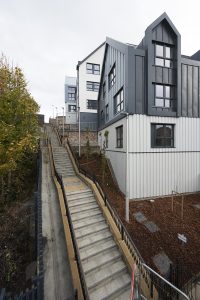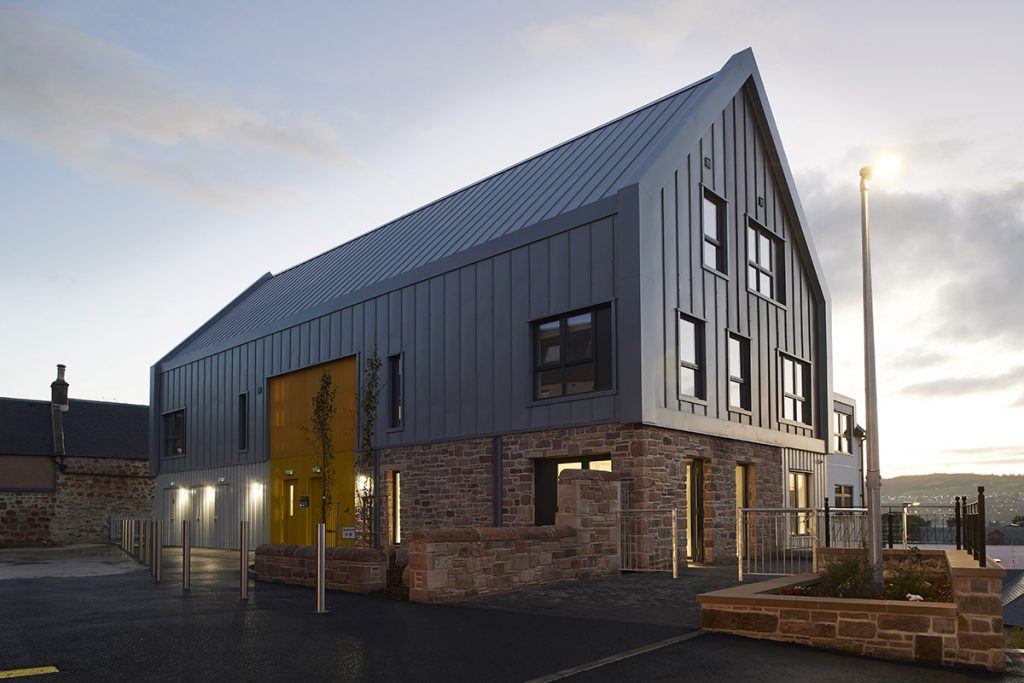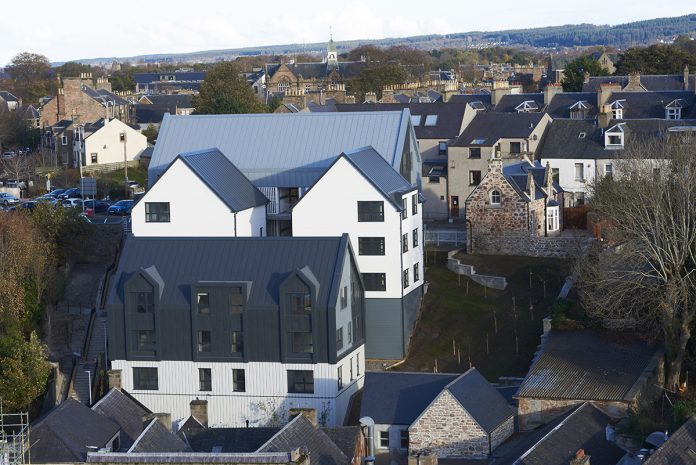Malcolm Thomson, sales director of Scotframe, discusses offsite timber frame, fabric-first and the new Saint Gobain Multi-Comfort concept
The UK needs between 240,000 and 300,000 new homes every year for the foreseeable future to tackle the housing shortage. Despite this, only around 190,000 are being delivered due to falling numbers of skilled workers, high costs, a materials shortfall and a lack of government funding.
These new homes must also have a low environmental impact and tick that all-important ‘affordable’ box. If they are to be affordable to live in, they must be built to maximise energy efficiency and reduce heating bills.
To meet these challenging targets, I believe we must take full advantage both of timber frame and of offsite manufacturing techniques.
In Scotland, 83% of our new build homes use timber frame, compared to just 23% in England. However, the market share for timber construction in the rest of the UK is steadily rising, as more people cotton on to the many advantages of timber frame.
Let’s start with those all-important financial benefits. A recent independent report commissioned by Rider Levett Bucknall showed that timber frame was the most cost-effective structural solution, offering an overall cost saving of 2.8% and a programme saving of 19.5%.
Timber frame homes can be built on average eight weeks faster when compared with traditional construction methods, and built to a higher sustainability standard, making them more cost-effective to live in. The thermal efficiency of timber frame is legendary, providing homes that are naturally warm in winter and cool in summer, allowing residents to enjoy significantly lower heating bills.
As technology improves, timber frame just keeps getting better. Advances in computer designed manufacturing processes are continuously improving the quality of timber frame products, offering high precision joints and better air tightness. Technology is likely to continue to improve and offer added benefits, as manufacturers can produce higher specification timber frames that are more durable and flexible for use on a range of housing projects.
Additional benefits include reduced noise levels on building sites, and greater soundproofing than many traditionally built homes. And of course, delivering homes under factory conditions offers a clean working environment that is unaffected by weather, improves productivity and enhances quality and safety.
So although most new homes in England and Wales are still traditionally built, a shortage of site skills and the rising cost of materials, coupled with the ever-growing list of benefits that timber frame provides, means even the biggest housebuilders are soon likely to start considering timber frame.
A fabric-first approach
At Scotframe, we champion the “fabric-first” approach, which can lead to significant energy cost savings over a home’s lifetime. This method of building prioritises insulation and airtightness over using more costly renewable systems such as solar panels or energy-saving technology such as smart home gadgets.
It sounds obvious, but a well-insulated, airtight house is key to energy efficiency, and this is where offsite systems really deliver. Our Val-U-Therm Plus closed panel building systems are particularly effective, as they have insulation that is injected into the panels offsite, which expands to fill every space. Up to 90% of the self-build kits we supply use Val-U-Therm Plus, which allows the construction of homes that could cost less than £95 a year to heat and are virtually zero carbon.
A fabric-first approach is generally considered to be more sustainable than renewable energy systems, as it doesn’t require the occupant to master complicated new tech or adjust their energy consumption habits – the building does the work for them. Also, because a building’s fabric can’t be easily tampered with by occupants, it will continue to perform as intended for decades.
Healthy, sustainable homes with Saint Gobain Multi-Comfort
Saint-Gobain’s aim to be a world leader in sustainable buildings has driven the company to create the Multi-Comfort concept – a way of designing and building sustainable, healthy and comfortable homes.
The way our homes perform is important for our health and comfort. Well-designed and constructed houses have the potential to make us healthier and happier.

The Multi-Comfort concept starts from the central premise that all homes can be designed to:
- Provide the highest levels of all-round comfort.
- Genuinely and positively contribute to health and wellbeing.
- Deliver the highest levels of energy efficiency – saving occupants money.
- Achieve the Passivhaus standard of energy efficiency.
Saint-Gobain believes that feeling good in your home is about having the perfect amount of light, the proper level of sound, the ideal temperature, superb indoor air quality and outstanding energy efficiency. At the same time, Multi-Comfort homes are more sustainable as they use less energy and resources and generate less pollution and waste.
Find out more about the Saint Gobain Multi-Comfort concept at https://multicomfort.saint-gobain.com/.
Malcolm Thomson
Sales Director
Scotframe Timber Engineering
Tel: +44 (0)1467 626823
malcolm.thomson@scotframe.co.uk
Twitter: @scotframe
Facebook: Scotframetimberframe
*Please note: this is a commercial profile.

















